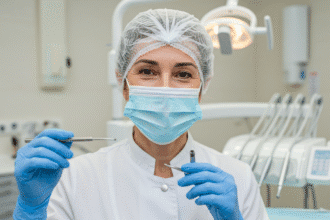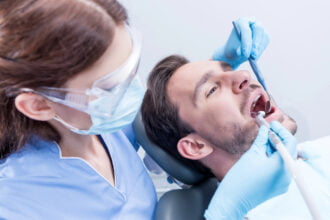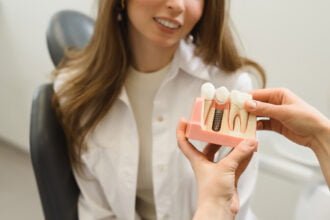The COVID-19 pandemic has completely transformed our lives! While this global pandemic has affected virtually every field of life, the healthcare and dental industry is also bearing the brunt, with an increased number of dental practices either shutting down permanently, thinking about an exit strategy, or finding alternative sources of income.
Managing a dental practice – even before the COVID-19 pandemic – was a challenging and demanding task. Dentists not only needed to be at the top of their clinical skills, but they also had to be excellent managers and businessmen to generate profit. And then came COVID-19, adding more challenges to the already struggling dental industry.
Like other businesses, the dental industry is also expected to change considerably, keeping in view the widespread global financial and lifestyle changes brought about by this pandemic.
Dental Industry at Crossroads
The utilization of dental services has undoubtedly taken a hit. During these testing times, when people are afraid of leaving their homes, visiting the dentist’s office for checkups and routine dental treatments has become a lesser priority.
According to the FAIR healthcare survey, dental services’ utilization decreased by 79% in April 2020, compared to the same month in the previous year. Even when many US states had lifted the lockdowns and travel bans by May 2020, the utilization still declined compared to May 2019. Furthermore, while more than half of the dental practices throughout the US had already opened by early August 2020, 54% of them complained of having low patient numbers.
Increasing Costs
Even in the pre-COVID-19 era, dentists often struggled to minimize treatment costs and mitigate factors such as the increasing cost of dental restorative materials and utility bills. Unfortunately, this pandemic has added another financial burden – the additional cost of the personal protective equipment (PPEs) to minimize the chances of COVID-19 transmittance. To ensure their team’s safety as their patients, dentists now have to buy disposable PPEs that have added to the overall cost of dental treatment – ultimately increasing the rates of various dental procedures. While some dental practices are still discovering avenues to cut their costs, most dental practices have no other option but to raise their charges.
Dental Service Utilization Trends
The COVID-19 pandemic has also affected what type of dental services are utilized by the patients. Previously, a dental checkup was one of the most common reasons patients visited their dentist’s office. However, this trend has changed now. Patients nowadays prefer to visit their dentist only in dental emergencies or only when they are having a specific dental problem like teeth cavities or gum inflammation that require urgent treatment. This suggests that during the COVID-19 pandemic, patients predominantly leave their houses to see the dentist only in situations that require emergency dental care, more specifically emergency tooth extraction, wisdom teeth removal and root canal treatment.
Patient Affordability
As an increasing number of individuals have lost their jobs due to the COVID-19 pandemic, many among them have to spend from their pockets in case they need dental treatment – as they don’t have dental insurance coverage anymore. This is another reason why the patient volume at dental practices has decreased pos,t-COVID-19, and patients tend to visit only when they absolutely have to.
The Increasing Trend of Teledentistry
To prevent their practices from permanent closure, dentists are now trying to find unique avenues to provide dental care – and for revenue generation. As a result, many dental practices now offer routine dental checkups through teledentistry. Dentists can now monitor the overall oral health of their patients – and give necessary instructions – through video or telephonic communication, without the need for visiting physically. In this way, dentists treat most of the dental problems through an online appointment, and only those patients are asked to physically visit the office who need an appointment with an emergency dentist.
Changing Trends – Expecting a Positive Change
But the trends are changing now. As of mid-November 2020, the American Dental Association did a survey that showed that about 86% of the respondents were ready to go back to the dentist’s office for treatment, where 31% of them have already been actively seeking dental treatment. Interestingly, 10% of the respondents were still unsure and were waiting for a medical breakthrough to resume their dental visits. Similarly, as of December 14th, the volume of patients in the dental office was at 78% of the pre-COVID-19 levels.
These trends at the end of the year 2020 indicate that despite challenges, the dental industry will continue to regain strength, and we can expect even further improvement in the industry in the year 2020. So, dentists should not lose hope and hope for the best in the coming months.










